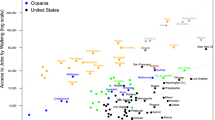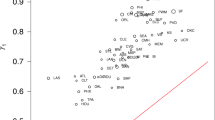Abstract
Define a transportation improvement's “impact zone” as the area within which resident households and business firms regularly utilize the improvement. Three simple parables suggest that the increases in impact-zone land rents that usually accompany improvements do not accurately reflect its benefits. Seemingly modest variations in the demand and supply relationships that characterize impact-zone residents can have major effects on the relationship between benefits received and the land-rent changes that are measured. Generally speaking, increases in impact-zone land rents substantially understate benefits unless these benefits are small either absolutely (because the improvement is modest) or relatively (because the impact zone is part of a homogeneous area of much larger size).
Similar content being viewed by others
References
Arnott Richard J & Joseph R Stiglitz (1981) Aggregate land rents and aggregate travel costs.Economic Journal 91: 331–347.
Ellet Charles, Jr (1839)An Essay on the Laws of Trade in Reference to the Works of Internal Improvement in the United States. Richmond, VA: P. D. Bernard.
Mohring Herbert (1961) Land values and the measurement of highway benefits.Journal of Political Economy 69: 236–249.
Author information
Authors and Affiliations
Rights and permissions
About this article
Cite this article
Mohring, H. Land rents and transport improvements: Some urban parables. Transportation 20, 267–283 (1993). https://doi.org/10.1007/BF01098930
Issue Date:
DOI: https://doi.org/10.1007/BF01098930




